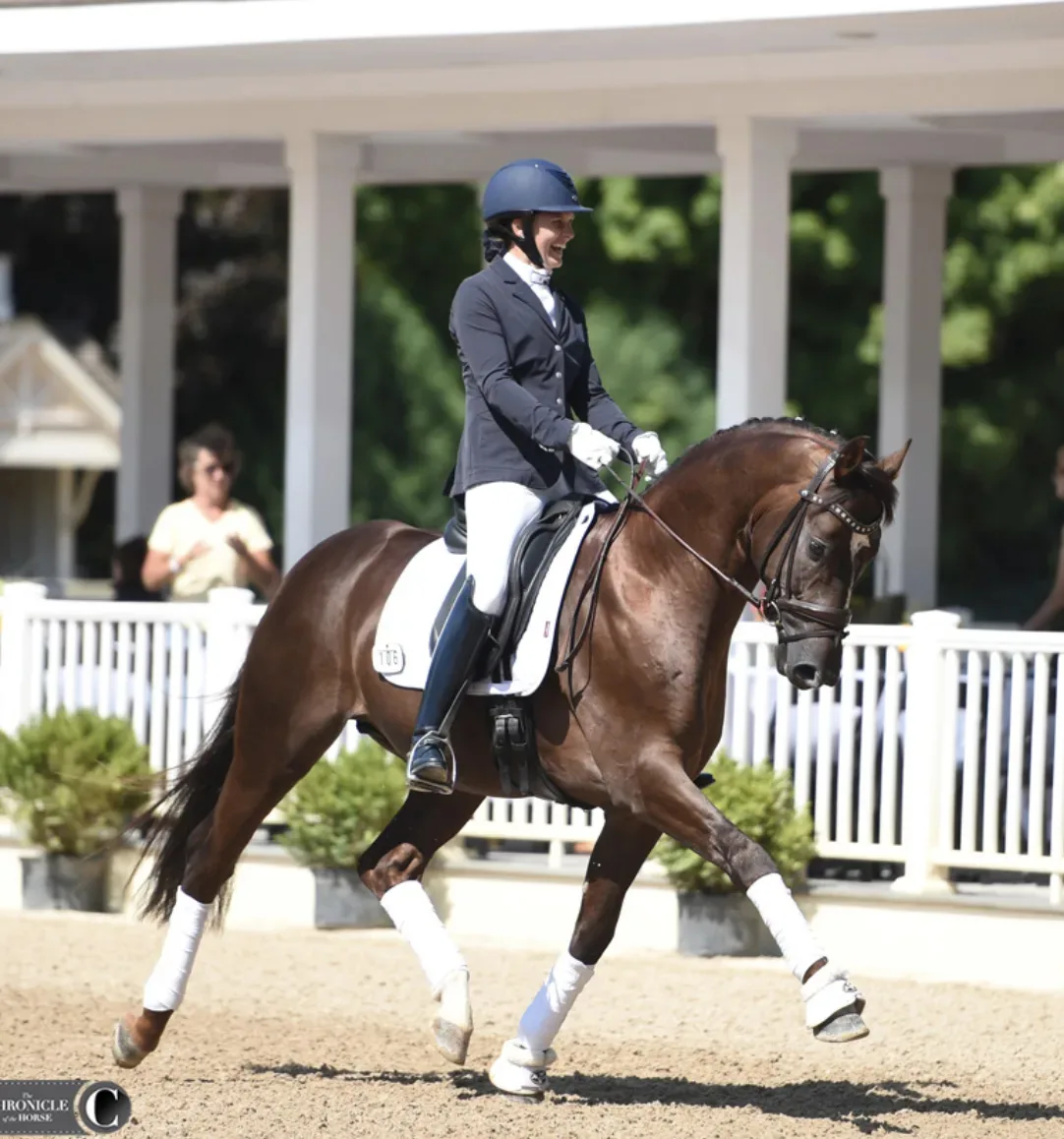Dressage wears its adherence to tradition like a badge of honor, but just because we are loyal to the old ways doesn’t mean our sport can’t benefit from evolving as well. Rising trot is a place we can, and should, do that.
Along with many of you, I read Natalie Lamping’s article “Permission To Post: A Case For Allowing Rising Trot Through Fourth Level” with great interest and attention.
I’m a trainer, fit, relatively middle aged, and blessedly free from physical maladies. I sit the trot on a variety of horses, once they are of the mind and body to allow this. I learned to sit securely at a young age, and thus far, my body continues to allow me to do so. Personally, I find sitting trot to be of great benefit, particularly when riding horses who are training to third level and above. While this works for me, I don’t consider “trainers” to make up the majority of our dressage community, and therefore, it is not fair to think that everyone can ride to this level.
I happen to be the instructor for a few remarkable, and mature, women, all of whom fall into the “adult amateur” category. They are lifelong riders, all of whom are fit and motivated—and none of whom can sit the trot.

This is due to legitimate, documented and potentially career-ending reasons. When I say “career ending” I am not being casual with this statement: They CAN sit the trot, but they SHOULD NOT for their health.
One of my riders, in particular, has undergone a shocking number of spinal surgeries, fusions and complex procedures simply to keep her quality of life intact. One thing that contributes significantly to that quality of life are her dressage goals on her delightfully safe and capable mare. There is no reason that this rider—if she was allowed to rise the trot—could not safely and happily reach her “big” goal of obtaining her USDF bronze medal. However, if she is required to sit the trot, every day she practices sitting trot, she will be exponentially shortening not only her riding life span, but doing significant damage to what is left of her spine. (Side note: We have been pursuing a “rising trot dispensation” from the U.S. Equestrian Federation now for years, and despite extensive documentation from physicians and neurosurgeons, obtaining such a dispensation has, thus far, been impossible.)
This rider has her neurosurgeon’s blessing to continue riding, especially since it brings such joy to her life. But her doctor has also put some reasonable limitations on it: no cowboy stuff, no wild rides and no sitting trot. So far, this rider has enjoyed competing at training and first level and has loved seeing her scores improve as she does. What she lacks in ability to sit safely, she more than makes up for in hard work and learning to ride capably, while managing the more advanced movements all in rising trot—which we know does not make them easier.
ADVERTISEMENT
My mature riders are not looking to make Olympic teams, nor to win national titles. They simply wish to be allowed to compete up the levels for their own personal satisfaction and enjoyment.
We should not limit the competitive—or physically comfortable—lifespan of riders such as this adult amateur, particularly when amateurs like her make up a large majority of classes at the lower levels of competitive dressage.
Honestly, why should we limit the functional lifespan of any rider? What is it proving to require sitting trot, particularly when choosing to rise at second level and above may be considered more difficult? I don’t believe that sitting trot is the wisest or kindest form of training for all riders—or all horses. I also think that optional work in rising trot does not diminish from the true nature of dressage, it simply gives a choice that may be kinder to the horse and to some riders.
In the end, yes, it has “always” been required to sit trot at second level and above. But we are smart people who evolve, and learn, and truly want what is best for our rider’s safety, our horse’s comfort, and our sport. So perhaps what we have “always” done is no longer the most thoughtful and inclusive path forward.
I’m Sara Bradley, a full-time dressage trainer and rider. Most of my time is spent educating a delightful variety of horses and riders at my facility, Waterford Equestrian Center in Waterford, Maine. When I’m not busy juggling the day-to-day activities at my farm, I enjoy activities like trail running over actual mountains and running marathons. (Life in the slow lane is not my style!) I enjoy many dressage adventures with my German Riding Pony, Dubai’s Dream, and you can follow this journey on Instagram @dubais_dream.














